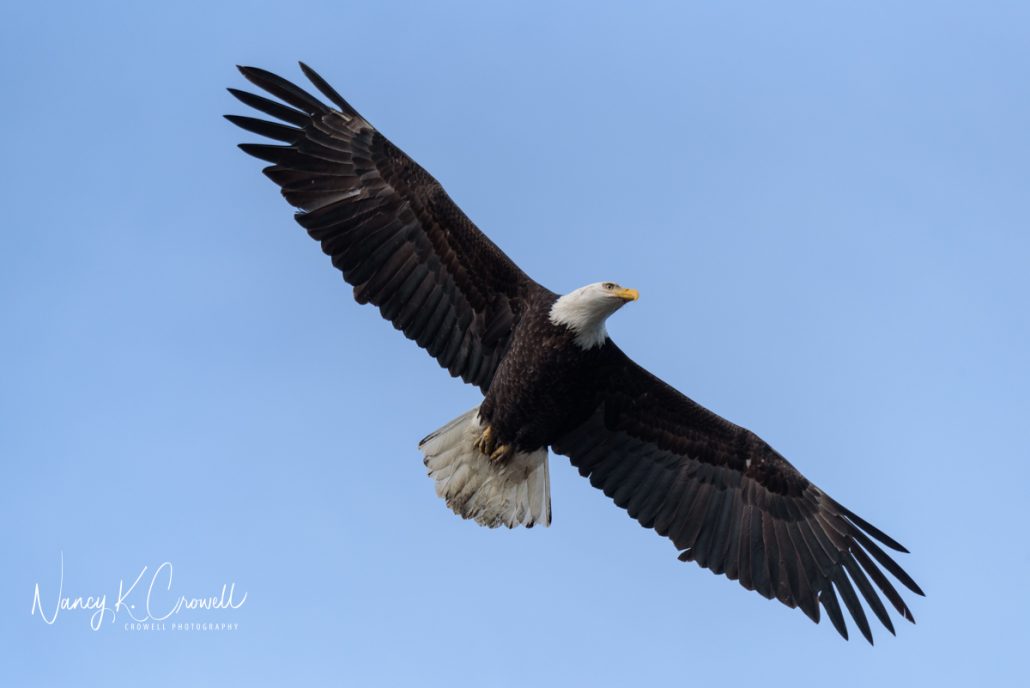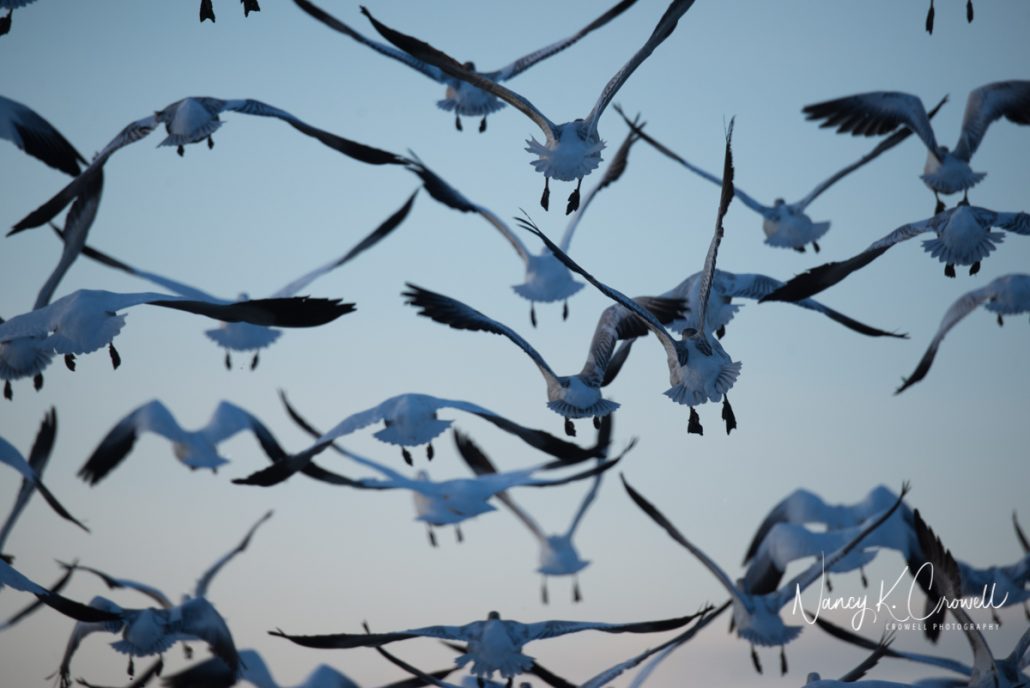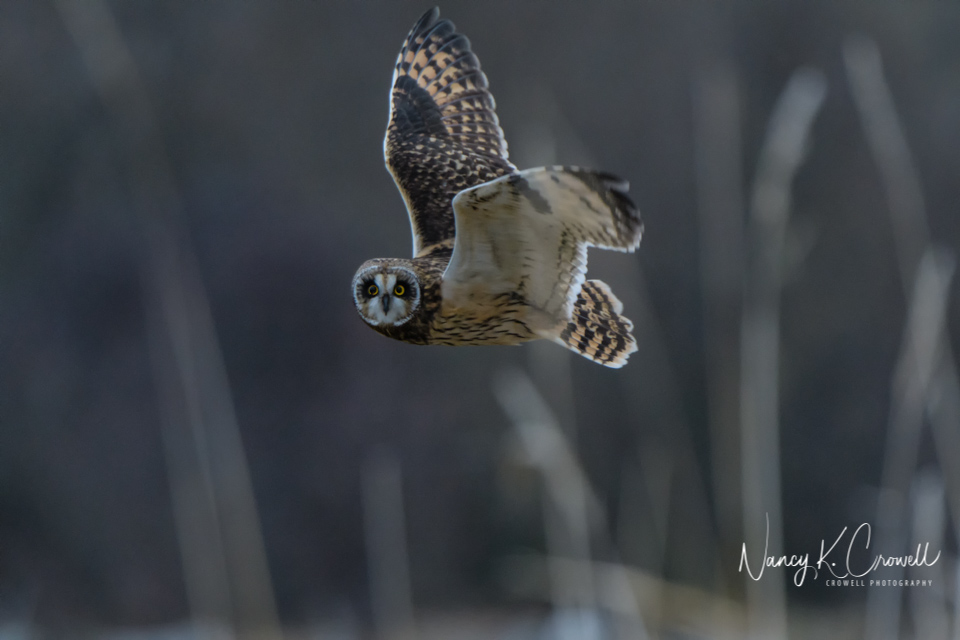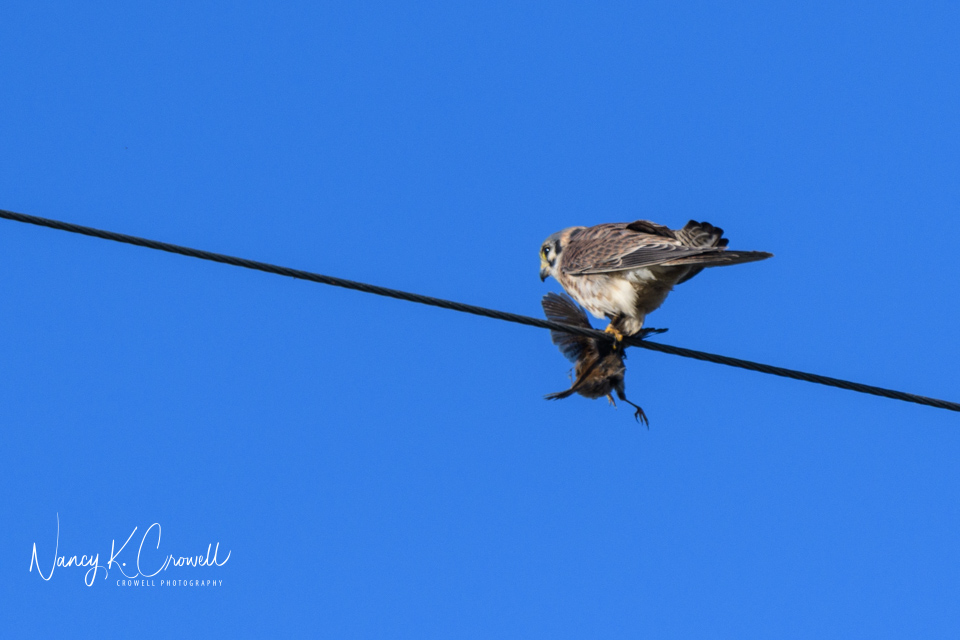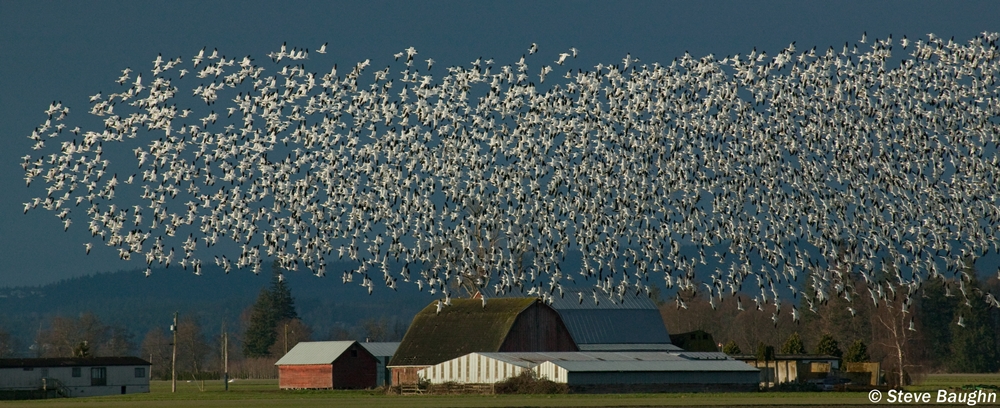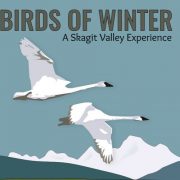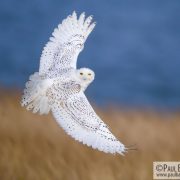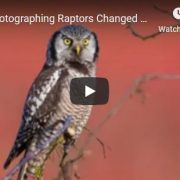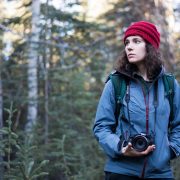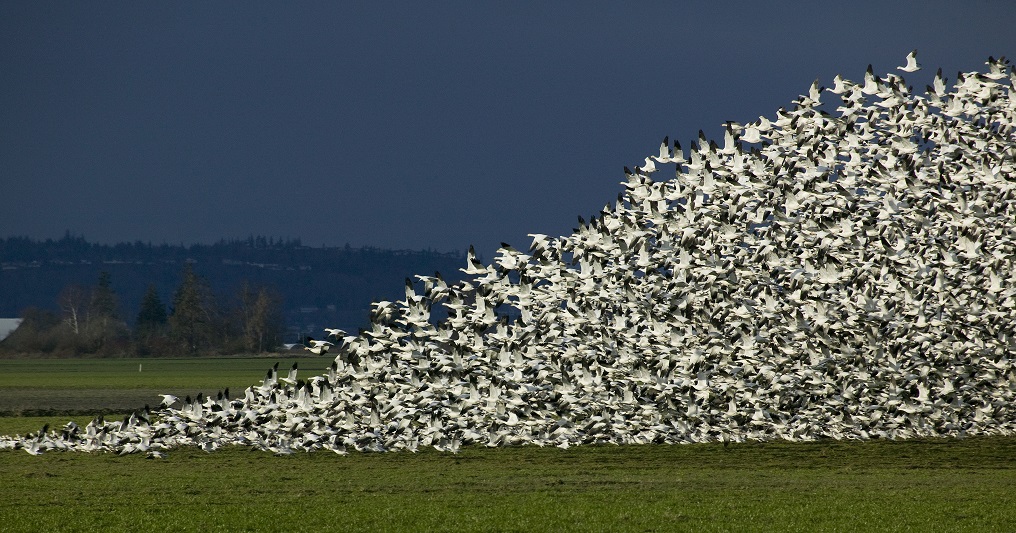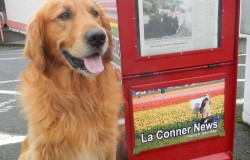The Joys and Perils of Bird Photography
As a professional photographer I consider myself a lifelong student of photography. I have worked in portrait studios, as a photo editor, sold my flower and landscape images to large corporate clients and individual collectors. I have had my share of success in my ‘comfort zone’ areas of photography. But I feel there’s always something new to learn, always something new to inspire. For me, that current inspiration is birds.
I live in one of the most abundant areas in the country for winter birding. Not only do we get 50,000+ migrating snow geese, 7,000 trumpeter swans and 3,000 tundra swans, but we also attract a large number of birds of prey – from eagles to American kestrels and pretty much everything in-between. And I’m not talking about a single bird here and there. I’m talking about red tailed hawks on every telephone wire, eagles in every tall tree, and more. Once you start to see them, they truly are everywhere you look. That’s the joy of living here – there are birds in abundance and if you learn to see them, you will be endlessly entertained.
As a photographer, I hadn’t lived here long before I simply had to start shooting pictures of the snow geese. They gather in such huge numbers, the first time you see them take off from a field is unforgettable. Although they are legally hunted, there are plenty of places to watch them that are not hunting grounds. In fact, it’s not uncommon to see people simply pull off the side of the road to watch snow geese for a while. It’s one of the things I love about living here.
But shooting pictures of snow geese can lead down the slippery slope of wanting to know more about birds and thus wanting to shoot pictures of other birds. Birds are not easy. Unlike the plants and landscapes I usually shoot, birds are unpredictable and quick. And often they appear in abundance in low light, or in marshy, wet, cold places. All of these factors can be a hindrance to taking up bird photography.
ESSENTIALS
What do you need for bird photography? Primarily, patience. While birds won’t complain that their portrait makes them look fat, they also won’t hang around and wait for you to get the lighting just right. They are wild creatures and are working hard to survive and reproduce. It’s important to keep this in mind – while you may be wanting to get a great shot of a bird, if you interfere with its hunting to get that picture, you may be jeopardizing its very survival. This is why you need patience.
The best way to get a good photo of a bird is to understand its environment and its behavior. Carefully put yourself into a position to observe and photograph without interfering and you will set yourself up for a successful photo session.
It’s critical to keep in mind that no photo is worth the death of a creature. Some days you will see things you wish you could photograph, but you will be too far away, the light will be too low, the weather won’t cooperate, the background won’t look good. If you’ve got the right mindset, none of this will matter. To be a successful bird photographer is to care about birds.
There are plenty of unethical bird and wildlife photographers – people who disrupt nests, bait, or flush birds that are resting just to get a shot. I personally don’t consider these people photographers – they are trophy hunters no better than those who kill endangered species. The difference is their trophy is a photo, not a carcass, but in the end it has the same impact.
PHOTO BASICS
There are many ways to approach bird photography. Some avid birders have set ups where they can attach a camera to their scopes. Some use point and shoot cameras with digital zooms. These all work fine if that’s what you want to do. As I shoot with a DSLR, I use more traditional equipment – a camera body, a long lens and sometimes a tripod. I find shooting without a tripod is often more efficient in our area because I can move more quickly, but using a tripod will result in more, better, sharper images.
Birds are so accessible around Skagit County that one of the most efficient ways to get good photos is to use one’s car as a blind and have a beanbag handy. I sometimes stay in my car and throw the beanbag over my door to give myself something on which to rest my camera. If I am walking out into a field where I will wait for birds to fly near, I use a technique for holding my long lens steady that involves bracing one elbow against my ribs. I also take a breath and hold it while I shoot. Even as advanced as today’s cameras are, with their autofocus and auto vibration reduction, when you’re shooting with a long lens even the slightest movement is likely to throw off your focus.
Since I first started shooting snow geese a decade ago I have come to understand that some birds are more difficult than others to follow with your camera. I shoot multiple exposures, 5-10 frames a second, and I pan with the birds, but shooting snow geese like this is a cakewalk compared to trying to follow a hawk on a hunt. This is where understanding the species you are trying to photograph helps. Some birds will return to their perch. Some birds hover while they hunt. If you can learn to anticipate this behavior, you stand a better chance of getting a good picture. I remember very clearly that the first owl I saw was sitting on a street sign on a foggy morning. I actually got a decent photo of it because I had my camera handy and was able to pull off the side of the road. I recommend joining your local Audubon Society if you’re serious about learning more about birds. There are also some great classes offered in the region, such a Bud Anderson’s raptor class (info available at www.falconresearch.org).
If you’re watching a bird on a perch – a wire or a post or a fence – waiting for it to fly, use that time to make sure your settings are right. I find a shutter speed of no less than 1/1600 is needed to stop birds in flight, and for some birds that can go as high as 1/2500. If you’re trying to shoot on an automatic setting, start with the sports setting. Ideally, you should take the time to learn to use your camera’s manual settings so you can control the look of the finished image.
If a bird takes flight as soon as you raise your lens to shoot a picture, you’re too close. I have watched photographers make this mistake over and over. I have made this mistake! Thinking I’m well out of the bird’s way, I raise my lens only to be skunked when the bird decides I must be a threat.
It’s tempting to want to get just a little bit closer. However, with today’s digital cameras one can crop in very closely on a photo and still have a shot good enough to print. And let’s be realistic – how many people print their photos anymore?
A lot of professional bird photographers have camouflage clothing and even camouflage covers for their lenses. This is a good idea as it is the least disruptive to the birds’ environment. It’s not that they won’t see you – especially hawks – but you will seem less threatening if you blend in better. It’s also a good idea to use your car as a blind, as most birds don’t perceive cars as a threat.
I highly recommend reading the Audubon Guide to Ethical Bird Photography as a primer to understanding the impact of pursuing birds with your camera.
EQUIPMENT
It’s a slippery slope. You get into birding and then you want pictures. And then you want better pictures. . . If you become serious about bird photography, it’s only a matter of time before you will want a long lens – whether it’s a high powered digital zoom or a big traditional lens. I have succumbed to that temptation myself, as I get more and more interested in taking better pictures of birds in flight. However, it doesn’t take a lot of expensive equipment to begin. A good place to practice is capturing birds at the feeder in your yard, if you have one. My first challenging subjects were the hummingbirds who feed in my yard year round.
There are certainly plenty of photography workshops available if you are so inclined. I have done a couple of wildlife photography workshops through The Summit Series of Workshops, which offer excellent access to National Geographic photographers, but I’m a professional photographer and my excuse is I am investing in my skills. Hobbyists may not want to spend the money and time to do a workshop.
OUTCOMES
What I have learned is that bird photography is exciting and challenging. The more I learn about birds, the more I want to find them and capture their behaviors. Since the bulk of my professional work involves plants and landscapes, which are mostly summer photo opportunities, birds in winter keep me active and thinking about photography in new ways. I am far from a master of bird photography, but I do see incremental improvements each winter and that’s personally very satisfying.
TOP 10 LIST
For those who want bullet points – here’s my list:
- Lower your expectations – birding photography is difficult. Do not expect to get the perfect shot right out of the gate.
- Cultivate patience – birds are wild creatures and the best way to capture images of them in their natural environment is to learn their behaviors and wait and watch.
- Read and absorb ethical bird photography guidelines. It’s just a picture to you, but it may be life and death for a bird.
- The most important equipment is behind the camera – you. Don’t invest in expensive equipment until you are convinced this is a passion you must pursue.
- Become a birder. Join birding groups, learn from birders.
- Hunters are not your enemy. Understand that many birding areas are also hunting grounds – but hunters may have great observations to share with you. They often walk the fields at dawn and dusk and can share what they see if you take the time to engage in a conversation.
- Start with backyard feeder birds. They will be the most accessible and most accustomed to your presence.
- Take a class or workshop – on birds, birding, bird photography.
- Practice, practice, practice. I can shoot a macro image of a flower or a landscape and know I have the image I want in just a few shots. With birds I may only get one or two shots I like out of hundreds – it’s the curse and the beauty of digital. In the old days of film, getting the shot right the first or second time was a real money saver. With digital, it’s a time saver as you won’t have as many photos to go through and throwaway.
- Remember to appreciate the birds. I love birding photography because it’s a technical and physical challenge, but also because I love watching the birds. Sometimes the light is bad or the background is junky or the birds are too far away for a good shot. When that happens, I usually just stop and watch.
Nancy Crowell is a professional photographer, writer and a Master Gardener who has lived in Skagit Valley for the past two decades.

